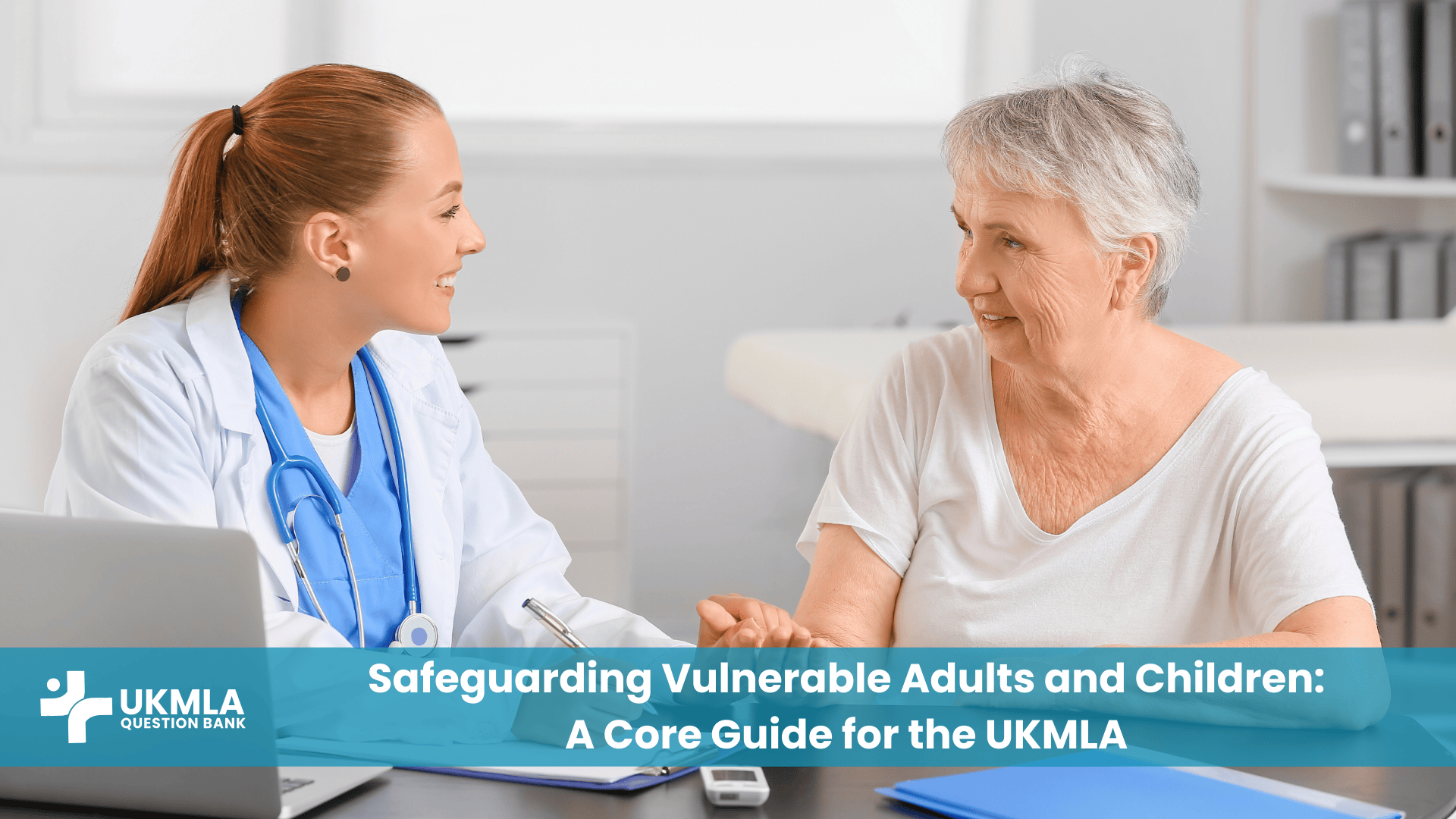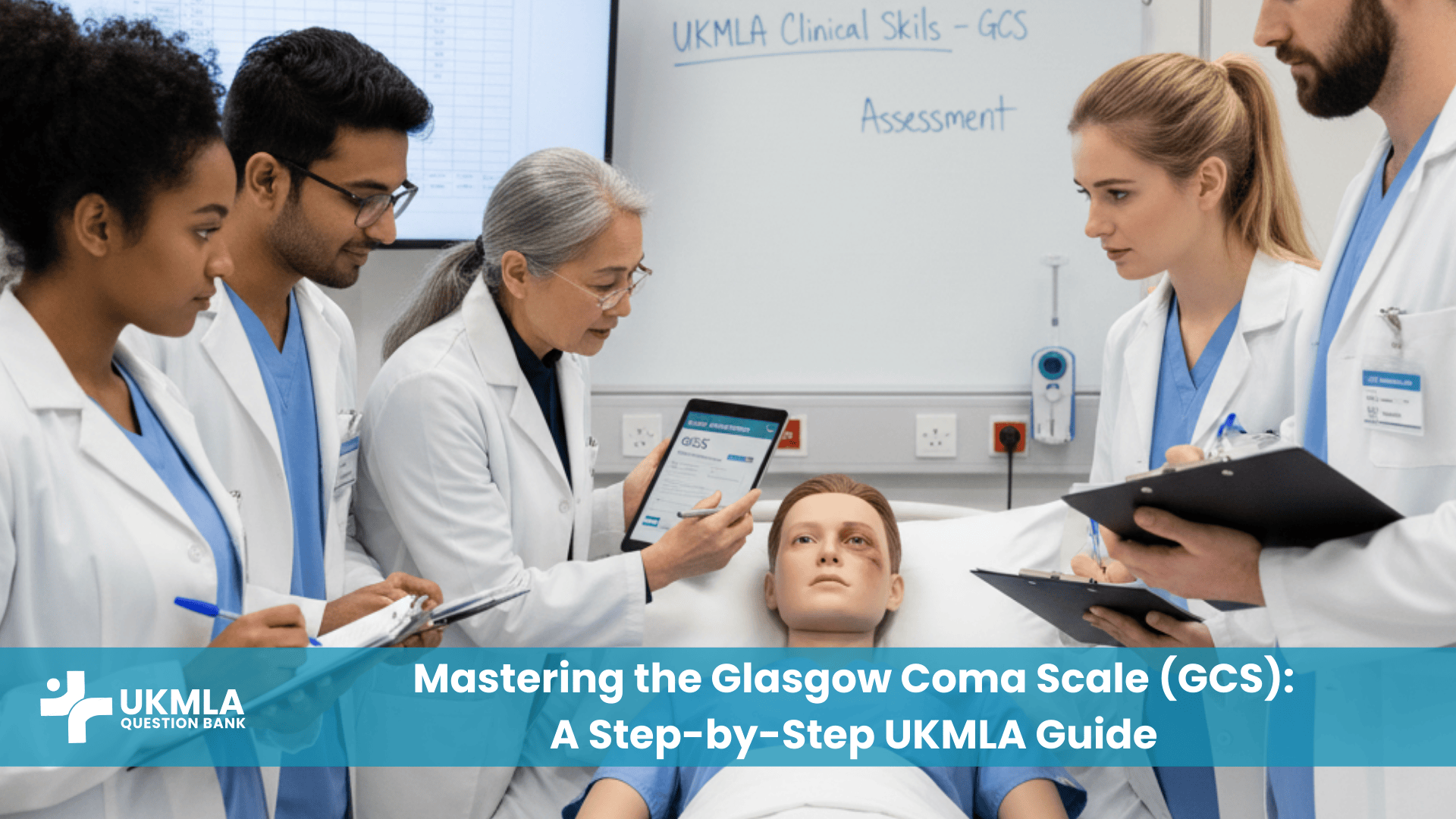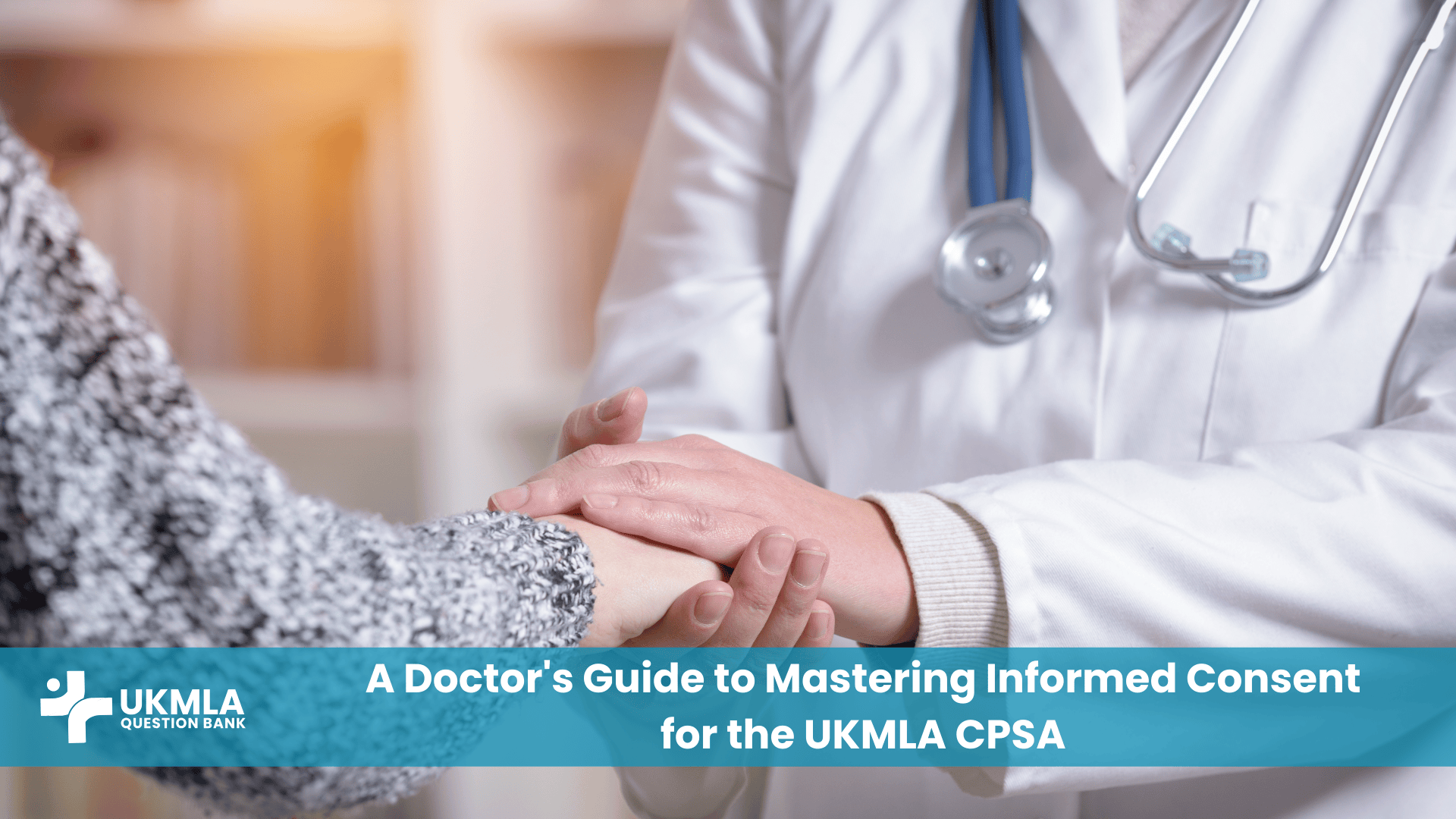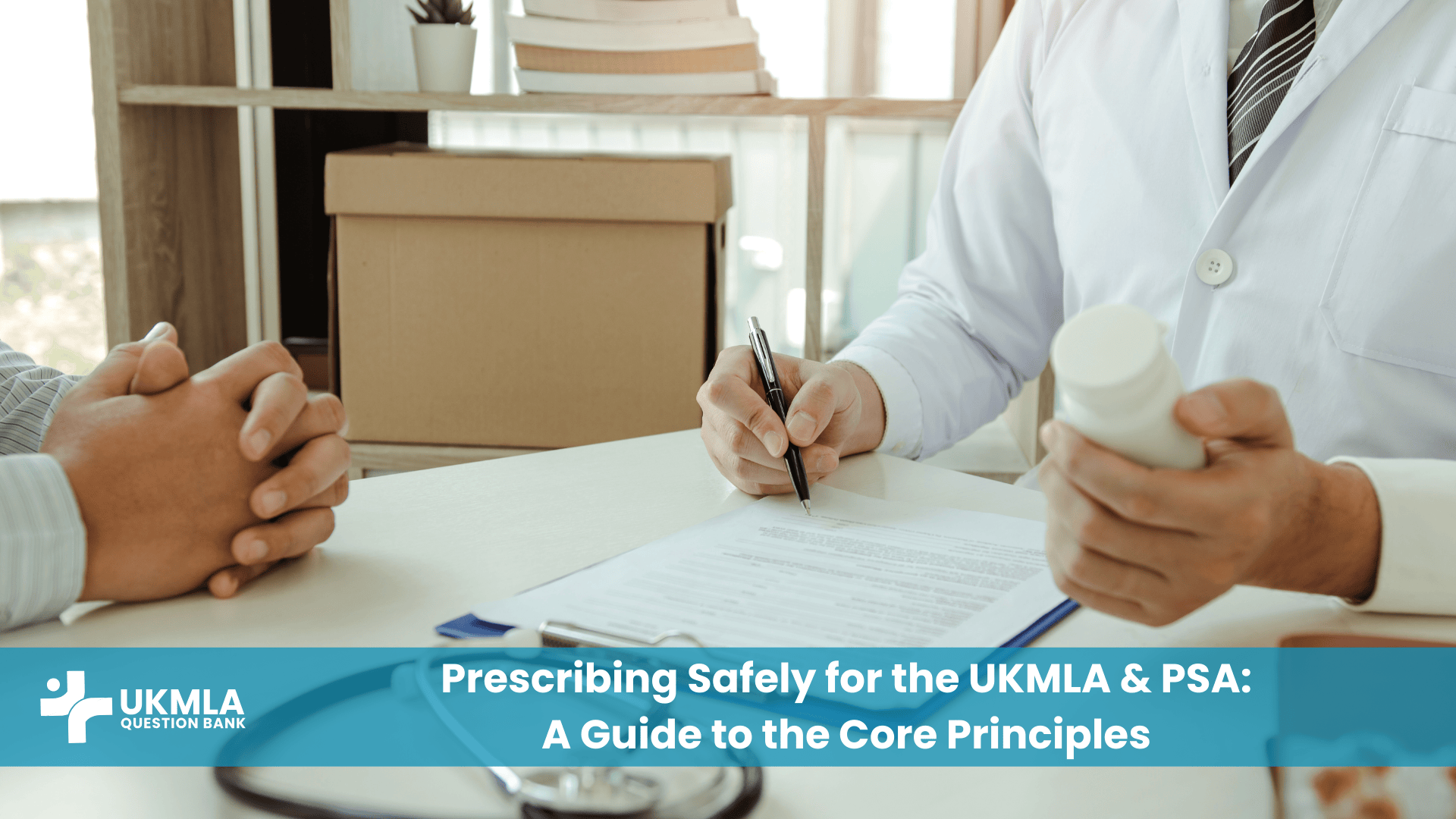Introduction
Understanding safeguarding adults and children ukmla is a fundamental professional, ethical, and legal duty that forms the bedrock of safe medical practice in the UK. For the UKMLA, safeguarding is rarely tested as a standalone, obvious question. Instead, it is a crucial theme woven into the fabric of numerous clinical scenarios across both the AKT and CPSA. You may encounter it in a paediatrics station where a child’s injuries don’t match the history, a geriatric consultation with a frail patient who seems fearful of their caregiver, an emergency department case involving domestic abuse, or a psychiatry review where a patient’s financial exploitation comes to light.
The GMC needs to know that you are not just a diagnostician, but a diligent and responsible practitioner who can identify risk and act appropriately to protect the vulnerable. Mastering this area is central to demonstrating your grasp of UKMLA professionalism and patient safety. This guide is designed to provide a clear, principle-based framework for understanding your safeguarding responsibilities and how to apply them in an exam context. By internalizing this framework, you’ll be prepared to handle these sensitive scenarios with the confidence and competence expected of a junior doctor in the UK.
Table of Contents
ToggleMastering Safeguarding Adults and Children UKMLA: 5 Key Principles
Principle 1: Recognition (Identifying Risk and Abuse)
Your first and most important role is to be able to recognise when a patient may be at risk. This requires a high index of suspicion and an understanding of what constitutes vulnerability and abuse. A “vulnerable adult” is defined as any person aged 18 or over who is or may be in need of community care services by reason of mental or other disability, age or illness; and who is or may be unable to take care of him or herself, or unable to protect him or herself against significant harm or exploitation. Safeguarding children applies to anyone under the age of 18.
Abuse and neglect can take many forms, and you must be alert to the signs. These signs can often present as clinical red flag symptoms for the UKMLA. As the GMC guidance on Protecting children and young people states, all doctors have a responsibility to be competent in this area.
Table 1: Categories of Abuse & Common Red Flags
| Category of Abuse | Common Red Flags and Indicators |
|---|---|
| Physical | Unexplained or recurring injuries, bruises in unusual places (e.g., torso, neck), injuries with a shape suggestive of an object, delay in seeking medical attention. |
| Emotional/Psychological | Anxious or withdrawn behaviour, low self-esteem, changes in eating or sleeping habits, reluctance to speak in front of a caregiver, fear or avoidance of certain people. |
| Sexual | Unexplained genital pain or bleeding, STIs, pregnancy in a young child, inappropriate sexualised behaviour or language. |
| Financial | Unexplained lack of money, sudden changes to a will or property, unpaid bills when someone else is supposed to be managing their finances, a caregiver showing excessive interest in the person’s finances. |
| Neglect/Omission of Care | Poor hygiene, inappropriate clothing for the weather, malnutrition or dehydration, untreated medical conditions, pressure sores. |
| Modern Slavery | Signs of physical or psychological trauma, appearing frightened or withdrawn, having few personal possessions, and having someone else who speaks for them and controls their documents. |
Principle 2: Response (Your Immediate Actions)
Once you have a concern, your immediate response is critical. The goal is to act in a way that is supportive, safe, and does not compromise any future investigation.
The GMC is clear on this: “You must listen to the child or young person and take what they say seriously. You must create a safe environment that allows them to speak openly and raise any concerns they may have.”
Your first step is to ensure the patient’s immediate safety. If they are in immediate danger, this may require urgent intervention. In most scenarios, the key is to listen carefully and empathetically. Use open-ended questions like “Can you tell me a little more about that?” and avoid leading questions that could influence their account (e.g., “Did he hit you?”). It is crucial that you do not promise confidentiality. You can explain this gently: “What you’re telling me is very important, and I am taking it very seriously. To make sure you get the right help and support, I will need to share this with some other people whose specific job it is to keep you safe. Is that okay?”
Principle 3: Reporting (Escalating Your Concerns)
The golden rule of safeguarding is: Do not act alone. You are a junior doctor, not an investigator. Your role is to recognise and report, not to investigate or prove abuse.
The chain of escalation is crucial and must be followed:
-
Discuss with a Senior Colleague: Your immediate first step should always be to discuss your concerns with a senior member of your team (your Registrar or Consultant). They have more experience and can guide you on the immediate next steps.
-
Inform the Named Safeguarding Lead: Every NHS Trust has a named doctor and nurse for safeguarding children and a lead for safeguarding adults. You must know how to contact them. Your senior will often guide this process.
-
Refer to External Agencies: Following local policy, a formal referral will be made to the relevant agency, which is typically Children’s Social Care for children or Adult Social Services for vulnerable adults. In cases of suspected criminal offenses, the police must also be involved.
For more information on the overarching NHS approach, you can refer to the main NHS England – Safeguarding policies and resources.
Principle 4: Recording (Meticulous Documentation)
Your clinical notes are a medico-legal document. In safeguarding cases, they are of paramount importance. Your documentation must be clear, factual, contemporaneous, and objective.
Your notes should include:
-
The date and time of the consultation and your entry.
-
Who was present in the room.
-
The patient’s own words, using direct quotes where possible.
-
Your objective clinical findings (e.g., “5cm oval-shaped bruise on the left upper arm, yellow-green in colour”).
-
The actions you took, including who you spoke to (naming the senior colleague and safeguarding lead).
-
The agreed plan.
Avoid writing personal opinions, speculation, or interpretations (e.g., write “Patient’s mother stated the child fell,” not “I think the mother is lying.”).
Principle 5: Legislation and Capacity (The Legal Framework)
Your safeguarding practice is guided by a robust legal framework in the UK. While you are not expected to be a lawyer, you are expected to understand the key principles of the legislation that governs your practice. This is a core part of medical ethics and law for the UKMLA. The Mental Capacity Act (MCA) 2005 is particularly high-yield. It is designed to protect and empower people who may lack the mental capacity to make their own decisions about their care and treatment.
Table 2: The 5 Principles of the Mental Capacity Act (MCA)
| Principle | Explanation |
|---|---|
| 1. Presumption of Capacity | Every adult has the right to make their own decisions and must be assumed to have capacity to do so unless it is proved otherwise. |
| 2. Support to Make a Decision | A person must be given all practicable help before anyone treats them as not being able to make their own decisions. |
| 3. Unwise Decisions | A person is not to be treated as unable to make a decision merely because they make an unwise decision. |
| 4. Best Interests | An act done, or decision made, under this Act for or on behalf of a person who lacks capacity must be done, or made, in their best interests. |
| 5. Least Restrictive Option | Before the act is done, or the decision is made, regard must be had to whether the purpose for which it is needed can be as effectively achieved in a way that is less restrictive of the person’s rights and freedom of action. |
Frequently Asked Questions (FAQ) about Safeguarding in the UKMLA
Safeguarding is the overarching term for protecting people’s health, wellbeing, and human rights, and enabling them to live free from harm, abuse, and neglect. Child protection is a part of safeguarding that is focused on protecting specific children who are suffering, or are likely to suffer, significant harm.
Gillick competence is a term used in medical law to decide whether a child under 16 is able to consent to their own medical treatment, without the need for parental permission. The Fraser guidelines are specific criteria that help doctors decide if they can provide contraceptive advice to an under-16-year-old without parental consent.
You have a professional duty to act. You should not approach the colleague directly. You must raise your concerns with a senior colleague, your educational supervisor, or the designated person in your organisation (such as a medical director or Freedom to Speak Up Guardian).
An adult with mental capacity has the right to refuse help, even if that decision seems unwise to you. Your role is to ensure they have all the information to make an informed decision, gently explore their reasoning, and document the conversation and their decision clearly.
They are often embedded in other stations. You might be taking a history from an elderly patient with multiple bruises, or a parent might give a vague or inconsistent history for their child’s injury. The assessors are looking to see if you can spot the red flags and articulate your concerns and a safe plan.
A body map is a detailed, schematic drawing of the human body used to accurately record the location, size, and nature of any injuries. It is a crucial tool in documenting suspected physical abuse, especially in children.
You are not expected to recite legislation verbatim. However, you are expected to understand and be able to apply the core principles of the key acts, especially the Mental Capacity Act 2005.
An LPA is a legal document that allows a person (the ‘donor’) to appoint one or more people (known as ‘attorneys’) to make decisions on their behalf if they lose mental capacity in the future. There are two types: one for health and welfare, and one for property and financial affairs.
An IMCA is an independent advocate who is appointed to support and represent a person who lacks capacity to make specific major decisions, where the person has no appropriate family or friends to consult.
Your primary duty is the safety and well-being of the vulnerable person. The key actions are to recognise the risk, talk to your seniors, and document everything clearly. Never try to investigate or manage the situation alone.
Conclusion
Understanding the principles of safeguarding adults and children ukmla is a non-negotiable aspect of your preparation. The examiners are looking for junior doctors who are not only knowledgeable but also responsible, ethical, and safe. Your ability to apply the five core principles—Recognise, Respond, Report, Record, and respect the legal framework—is a clear demonstration of your fitness to practise.
These scenarios are designed to be challenging, but with a structured approach, they become manageable. Think of safeguarding not as a separate subject to be memorized, but as a lens through which you view every patient interaction. This mindset will prepare you not just for the exam, but for the profound responsibility of being a doctor, a role in which you are often the first and most important line of defence for the most vulnerable in society. It is one of the many challenging scenarios for the CPSA where a calm, structured approach is key.




